Knowledge
Maximizing Efficiency: Choosing the Best Fiber Termination Box Wall Mount
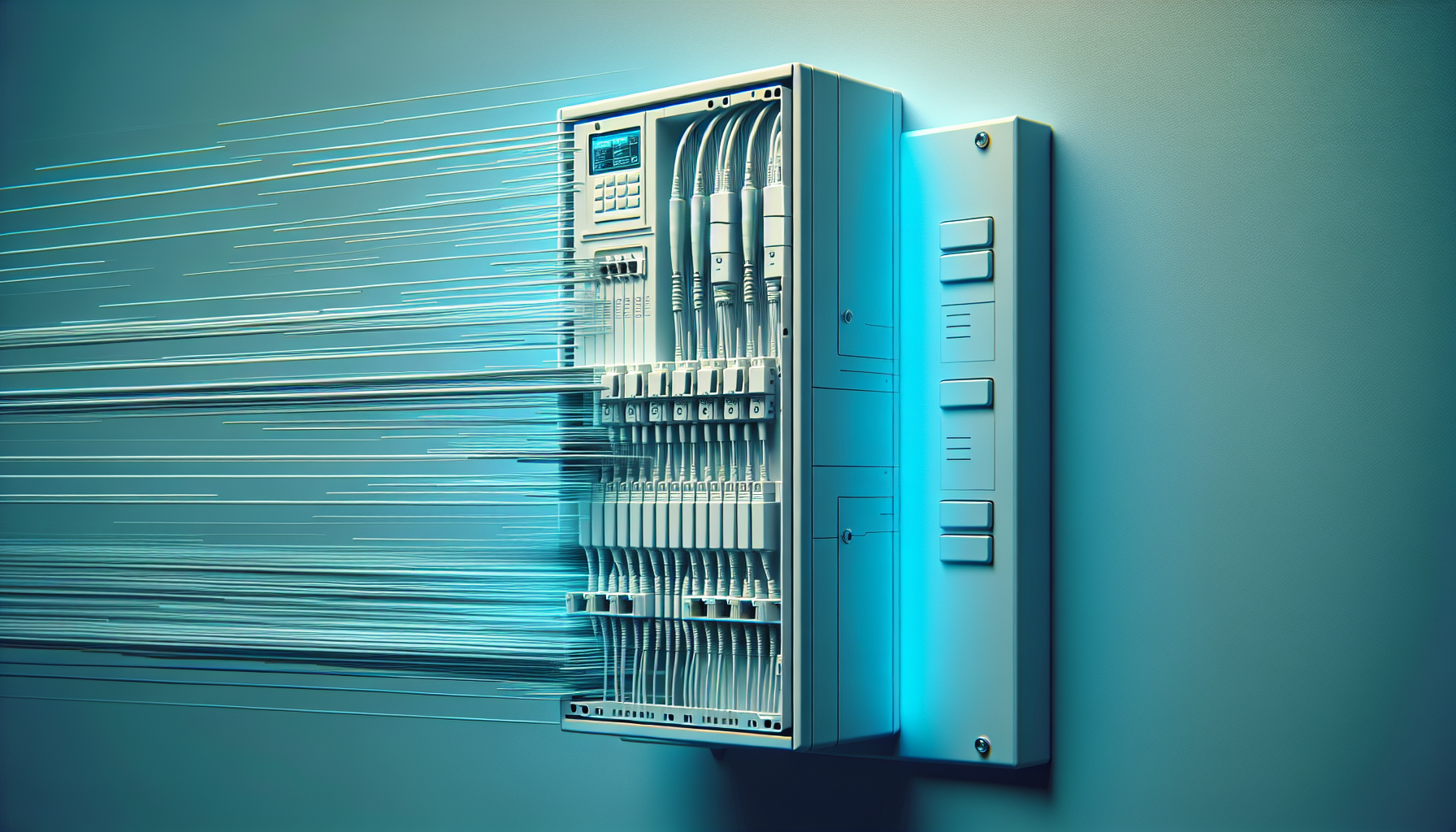
Understanding Fiber Termination Boxes
Fiber termination boxes play an essential role in the field of telecommunications and network infrastructure. They are critical components for managing and protecting fiber optic connections.
Importance of Fiber Termination Boxes
Fiber termination boxes serve a crucial function in fiber optic networks. They provide a secure environment for the fragile optical fibers to be spliced together or connected with pigtails, ensuring the integrity of the signal being transmitted. These boxes safeguard the connections from external elements and mechanical damage, which could potentially disrupt communication. Moreover, they allow for better organization of the fiber optic cables, making maintenance and future expansions more manageable.
Types of Fiber Termination Boxes
There are various types of fiber termination boxes, each designed to cater to specific needs and environments. The choice of a fiber termination box often depends on the number of fiber connections required, the location of installation (indoor or outdoor), and the level of protection needed.
One of the primary types is the fiber termination box wall mount. These boxes are designed to be mounted on walls, offering a stable and secure platform for fiber optic cables and splices. Wall-mounted termination boxes are popular in both residential and commercial settings due to their ease of access and space efficiency.
Another common type is the pole mount fiber termination box, typically used in outdoor applications and in areas where wall space is limited or not available. These are built to withstand harsh weather conditions, providing a durable solution for outdoor fiber optic cable management.
Fiber termination boxes can also be differentiated by their internal structure and the materials used for their construction. They are available in various configurations, such as:
- Simplex and duplex options for single or multiple fiber connections.
- Lockable designs for enhanced security against unauthorized access.
- IP-rated enclosures for protection against dust and moisture.
By selecting the appropriate type of fiber termination box, such as a wall mount or pole mount, and considering the specific features offered, individuals and telecom carriers can maximize the efficiency of their fiber optic network installations. For more information on installation practices, check out our guide on fiber termination box installation, and for pricing details, visit fiber termination box price.
Wall-Mount Fiber Termination Boxes
When deploying a network infrastructure, wall-mounted fiber termination boxes play a pivotal role in the organization and protection of fiber optic connections. They are essential components for field installations, ensuring a seamless transition from feeder cables to drop cables in various settings.
Features and Benefits
Wall-mount fiber termination boxes provide a secure and accessible termination point for feeder cables to connect with drop cables in FTTx networks. Their design offers space for splicing, fiber convergence, and long terminated fibers. Some boxes also accommodate pre-connected cables, connectors, or pigtail field connections, adding to their versatility.
The benefits of using a wall-mount fiber termination box include:
- Protection: They safeguard fiber optic connections from physical and environmental harm.
- Organization: They enable neat cable management, reducing clutter and the risk of damage.
- Accessibility: They allow easy access for maintenance and reconfiguration.
- Flexibility: They support a variety of applications and can be used in diverse environments, from computer rooms to telecommunication cabinets.
The use of these termination boxes translates to a more reliable and easier-to-manage network infrastructure. Our range of fiber termination boxes not only ensures the safety of your connections but also enhances the overall performance of your network system.
Applications and Installation
Wall-mount fiber termination boxes are suitable for a multitude of applications, including but not limited to:
- Entry terminals for buildings
- Computer rooms and data centers
- Telecommunication cabinets
- Primary cross-connects in a structured cabling system
Their installation is a crucial process that requires precision and expertise. For guidance on fiber termination box installation, we provide comprehensive instructions and best practices. It is important to choose a termination box that aligns with the specific needs of your application, whether it’s for an indoor setting that provides a transition between risers and horizontal cables or for an outdoor environment where a durable enclosure is necessary to withstand the elements.
| Environment | Features |
|---|---|
| Indoor | Transition between riser and horizontal cables, space for fiber convergence and storage |
| Outdoor | Environmentally sealed, suitable for fiber splicing, termination, and cable management |
Sources: Baudcom, Holight Optic
Whether you’re managing a telecommunications network or setting up a data center, our selection of wall-mount fiber termination boxes is designed to maximize efficiency and connectivity. By choosing the right box for your needs, you can ensure a high-performing and secure network that stands the test of time.
Internal Components of Fiber Termination Boxes
When we delve into the world of fiber optics, the importance of a secure and efficient termination system becomes clear. Fiber termination boxes play a pivotal role in this system. Understanding the internal components of these boxes is crucial for anyone involved in the installation or maintenance of fiber optic networks.
Fiber Connector Protection Element
The fiber connector protection element is one of the most critical internal components of a fiber termination box. This component safeguards the delicate fiber connectors from external elements that could potentially cause damage or loss of signal.
According to Fibertronics, a leading provider in the industry, the protection element should ensure that the fiber cables are securely anchored and that the connectors are not subject to any undue stress or movement that could result in signal degradation. The protection element must be constructed from durable materials to withstand the rigors of both indoor and outdoor environments.
Internal Components and Housing
The internal components of a Fiber Termination Box include several fixtures such as fixed fiber trays and a support frame. These components are designed to maintain the fibers in an orderly and accessible manner. The housing, typically an IP-rated enclosure, is made from impact-resistant materials that provide the first line of defense against physical impact, dust, and even corrosion, ensuring the longevity of the system in various settings.
Our fiber termination boxes are created with these standards in mind, offering a robust solution for managing fiber cables and terminating fiber optic cables. They connect the cable’s core and pigtail, providing a safe and secure housing to protect fiber optic splices and facilitate easy distribution. This makes them a staple in telecommunications and network equipment rooms, particularly for FTTH applications.
For those interested in the different types of termination boxes and their specific uses, including wall-mounted options, we have comprehensive guides and articles on our website. Check out fiber termination box installation for more information on how to properly set up your fiber termination system. Additionally, we understand that budgeting is an essential aspect of project planning, and thus we provide a detailed look into fiber termination box price to help you make an informed decision.
In conclusion, the optimal functioning of a fiber termination box is heavily reliant on the quality and arrangement of its internal components. By selecting a termination box with superior internal elements and robust housing, you provide your fiber optic network with the protection and organization required to operate at peak efficiency.
Fiber Termination Box Selection Guide
When selecting a fiber termination box, particularly one that is wall-mounted, there are multiple factors to consider ensuring that it meets the requirements of your telecommunications or network setup. Let us guide you through these considerations and the distinctions between indoor and outdoor options.
Factors to Consider
When choosing the right fiber termination box wall mount, the following factors should be taken into account:
- Capacity: Determine the number of fiber connections required.
- Size: Consider the space available for mounting the termination box.
- Material Durability: Ensure the box is made of sturdy, impact-resistant materials.
- Protection Level: Look for IP-rated housing to protect against dust and moisture.
- Internal Organization: The box should have a well-organized interior for fiber management.
- Accessibility: It should allow for easy access for maintenance and adjustments.
- Compatibility: Confirm that the termination box is compatible with the types of fiber cables and connectors in your network.
- Price: Evaluate the cost-effectiveness by comparing the fiber termination box price to its features and quality.
Indoor vs. Outdoor Options
The environment in which the fiber termination box will be installed significantly influences the choice between indoor and outdoor options:
- Indoor Termination Boxes: These are designed to transition between riser and horizontal cables, offering flexibility in extending, terminating, or splicing fibers. They provide space for long terminated fibers and fiber convergence. Indoor boxes are typically used within controlled environments such as data centers, equipment rooms, and indoor network enclosures.
- Outdoor Termination Boxes: Outdoor boxes are built to withstand harsh environmental conditions, protecting fibers from damage due to weather, moisture, and other external factors. They are commonly used for field installations in FTTx networks, agricultural telephone systems, and outdoor telecommunication infrastructures.
Here’s a simple table to help differentiate the features of indoor and outdoor fiber termination boxes:
| Feature | Indoor Fiber Termination Box | Outdoor Fiber Termination Box |
|---|---|---|
| Environment | Controlled indoor settings | Exposed to outdoor elements |
| Protection Level | Basic dust and interference protection | Weatherproof, dust, and moisture-resistant |
| Material | Less robust materials adequate | Highly durable, robust materials |
| Applications | Data centers, indoor networks | FTTx networks, outdoor infrastructures |
It’s important to assess the specific needs of your network and the conditions in which the termination box will operate. For instance, indoor boxes might be sufficient for an office building, whereas outdoor boxes are essential for a field deployment exposed to the elements.
When planning the fiber termination box installation, consider not only the current requirements but also future scalability. It’s wise to select a termination box that can accommodate growth in network capacity to avoid costly upgrades down the line.
By carefully considering these factors and the indoor versus outdoor requirements, you can ensure that you choose a fiber termination box that maximizes efficiency, durability, and functionality for your specific application.
Leading Brands and Certifications
When it comes to selecting a fiber termination box wall mount, the brand and their certifications play a pivotal role in ensuring quality and reliability. We will explore some of the renowned brands in the industry and the certifications that back their products, helping you make an informed decision.
CommScope and Legrand
CommScope is recognized for providing a diverse array of wall boxes for both copper and fiber connectivity. Their network termination boxes are designed for efficiency, facilitating rapid network deployment and easing the process of network modifications. These wall boxes are available in multiple dimensions to meet spatial requirements while offering superior cable management solutions. For detailed specifications and options, you can visit CommScope.
Legrand, another key player in the industry, presents rack and wall mount enclosures as their main platforms for securely mounting, routing, managing, and maintaining vital fiber optic connectivity and cabling. Legrand’s solutions aim to blend flexibility, aesthetics, and durability. Their Fiber Workstation faceplates, panels, and surface-mount boxes are crafted with meticulous attention to detail. Furthermore, Legrand provides fiber connectors in single-mode and multimode formats, catering to different termination methods such as fusion, mechanical, and anaerobic, which can be explored in more depth at Legrand.
Fibertronics and Fiber Optic Link
Fibertronics specializes in fiber optic solutions that adhere to stringent industry standards. They have achieved AS9100D and ITAR certifications as officially assessed by NSF-ISR, underscoring their commitment to quality and compliance. Their plenum rated (OFNP) assemblies are in line with NEC 770 requirements, ensuring that installations meet the necessary safety and performance standards. For a closer look at their product offerings and certifications, visit Fibertronics.
Each brand brings its own strengths to the table, and depending on your specific needs—be it for residential, commercial, or industrial applications—you can find the most suitable fiber termination box wall mount. Remember to consider factors such as size, capacity, and compatibility with your existing setup. For guidance on installation, refer to our fiber termination box installation guide, and to compare options based on cost, check out our fiber termination box price page.
By choosing a reputable brand with the right certifications, you can ensure that your fiber termination box wall mount will provide a resilient and efficient solution for your fiber optic network needs.
Enhancing Connectivity with Fiber Enclosures
Enhancing connectivity within our network infrastructure involves more than just choosing the right fiber termination box wall mount; it also includes selecting the appropriate fiber enclosures. These enclosures play a pivotal role in organizing and protecting the delicate fibers that are the backbone of modern telecommunications. In this section, we discuss rack-mount fiber enclosures and provide an overview of fiber patch panels.
Rack-Mount Fiber Enclosures
Rack-mount fiber enclosures are designed to be installed between or within server racks, offering a robust and flexible solution for managing fiber optic cable connections. They serve as a central point where cables converge, often accommodating various types of fiber optic panels including LC, SC, or MTP®/MPO. These enclosures might incorporate features like fiber splice trays or MTP®/MPO-LC fiber cassettes to further streamline the connectivity process.
| Enclosure Type | Compatibility | Capacity |
|---|---|---|
| FS FHD-4UFCE | LC, SC, MTP®/MPO | Up to 432 fibers |
Data courtesy: FS.com
Rack-mount fiber enclosures are indispensable in high-density data center cabling systems. They simplify cable management, significantly reducing cable clutter which in turn enhances maintenance efficiency and troubleshooting. By neatly arranging cables, these enclosures also prevent potential damage that may result from entanglement or mishandling.
Moreover, the versatility of fiber enclosures allows for hybrid cabling solutions within data centers. This involves pairing blank fiber enclosures with multimedia copper/fiber modular panels to enable photoelectric combined wiring, catering to both fiber and copper cabling needs.
For more detailed guidance on fiber termination box installation, including rack-mount enclosures, and to understand the investment associated with these solutions, explore our comprehensive breakdown of fiber termination box price.
Fiber Patch Panels Overview
Fiber optic patch panels are specialized enclosures that function as a central distribution point for fiber cable networks. They facilitate the entry of bulk fiber cable into the panel, where each fiber strand is segregated into individual or pairs of strands. These strands are then connected to electronic devices, enabling communication over the fiber optic network.
Patch panels are crucial for maintaining the organization of fiber cables and ensuring that the connections remain accessible for future updates, maintenance, or troubleshooting. By centralizing the distribution of the fiber strands, patch panels make it easier to manage large-scale fiber optic networks and can greatly improve the overall functionality of the system.
Fiber optic patch panels come in various sizes and configurations, designed to cater to different network scales and requirements. When selecting a patch panel, it’s important to consider factors such as the number of connections needed, the type of fiber cables used, and the physical space available within the network infrastructure.
In summary, both rack-mount fiber enclosures and fiber patch panels are essential components in organizing and safeguarding our network’s fiber optic connections. By integrating these tools into our cabling systems, we can enhance the efficiency and reliability of our telecommunication networks, ensuring that they are well-equipped to handle the demands of modern data transmission.


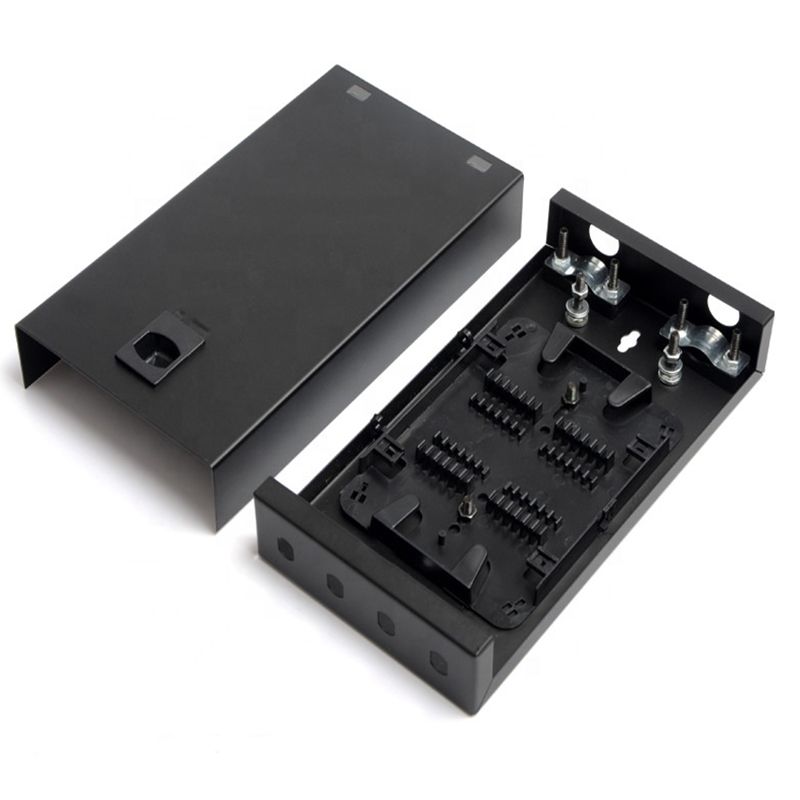
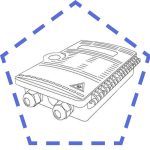 Fiber Optic Termination Boxes
Fiber Optic Termination Boxes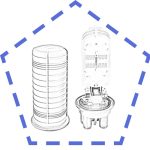 Fiber Optic Splice Enclosures
Fiber Optic Splice Enclosures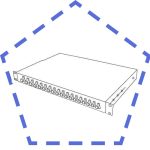 Fiber Patch Panels
Fiber Patch Panels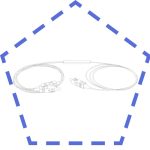 PLC Splitters
PLC Splitters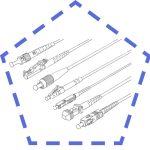 Fiber Optic Pigtails
Fiber Optic Pigtails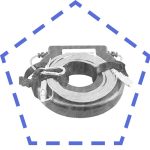 OTDR Launch Cables
OTDR Launch Cables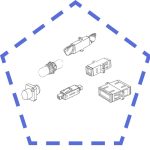 Fiber Optic Adapters
Fiber Optic Adapters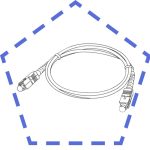 Fiber Optic Patch Cords
Fiber Optic Patch Cords